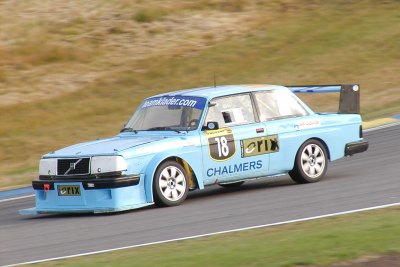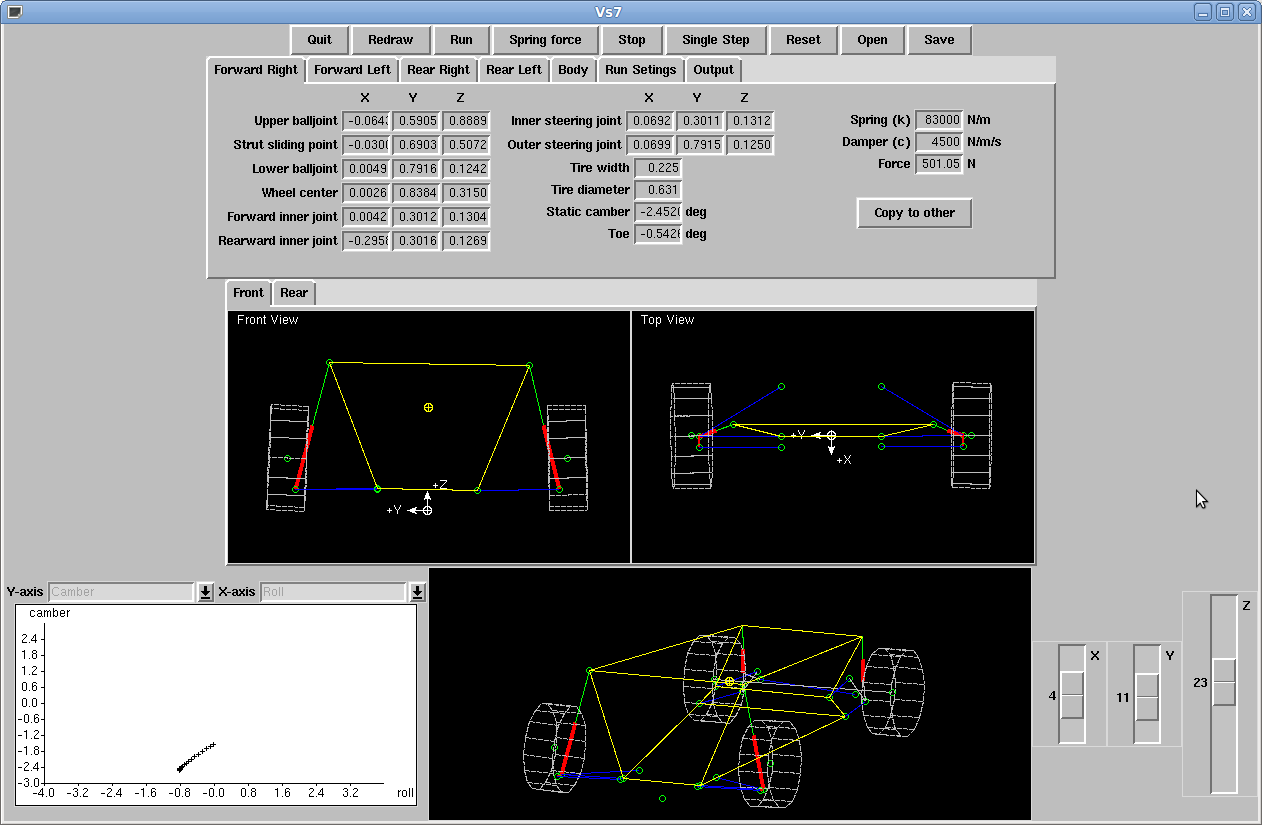Cars & Racing ...
A 1971 Mercedes SLC
This is my daily driver.

Chalmers Racing
A couple of year ago we ran a racing team in the Swedish
endurance racing series SLC. We built a Volvo 240 with a
Volvo 6 cyl twin turbo engine.

As part of that project we did a few cool things:
- I wrote a chassis simulation software
- I wrote a Race track simulator.
- We built a complete data logging system with live radio transmission to the pit.
- We decompiled, reverse engineered, and rewrote a Bosh Motronic ECU and converted it to handle Turbo boost
- Calculated, designed and built a composite and carbon fiber aero kit.
- Built driver adjustable sway bars.
Chassis simulation
The idea was to create a simple but powerful virtual 7-post rig to be able to test various chassis settings. First ambition was to be able to handle steady state like scenarios, but I was hoping that the simulation engine should be able to handle full dynamics as well.
A screen shot of a run:

Here camber angle is viewed as a function of roll. The roll is induced by a simulated side force that is applied at the center of gravity of the car.
It ran a full physical simulation of a car with all movable members of the chassis in full simulation. Dampers, springs etc where simulated as well. It was using a free software package called Open Dynamics Engine (ODE) for the physics. I was using a mix of C++ and Perl/Tk for to implement the simulation engine, the GUI and setup part.
Data logging
We designed our own race car electrical system as well as a data logging system. The data logger was quite fun, it conisted of a wired circuit board with inputs for various sensors, some from the engine, such as RPM, temperature etc, as well as a speed sensor and, not the least, an X-Y accelerometer.
The data logger was connected to a small lap top in the car. It was equipped with a standard WLAN adapter. In the pit we had an other lap top with a wlan adapter as well. Because the WLAN was not able to cover the whole track and the connectivity was rather spurious we had to develop our own Transport Protocol as TCP was deemed useless. Me and my friend Per Andersson designed and implemented a UDP based transport employing a totaly "unfair" and aggressive tactic. It simply bombarded the server with un ACK:ed data frames at max speed. This meant that as soon as the car was within WLAN range it did not waste any time before transferring the queued data. It turned out to be very effective.
Car & Race track simulation
With the collected speed and accelerometer data I could actually reconstruct an approximation race track
With race track data the logical next step was to make a simulation. A simple car model was created.
Unfortunately I have lost the speed plots that came out of the simulation, but they where fairly consistent with the data log.
An fun observation was that we sort of came to the same conclusion as Formula 1, with regards to how much aerodynamic down force is optimal for different tracks. The slower track the more downforce should be used (as downforce will cost top speed, which is more important on fast tracks). We could also conclude that with the Swedish slow tracks (except for Anderstorp) it difficult to accomplish enough downforce to reach optimum - ever.
I can't say we used the simulation very much, but we tried to assess what impact our aerodynamic modifications could do for us, of course, we could also try out what more HP, better brakes etc, could give.